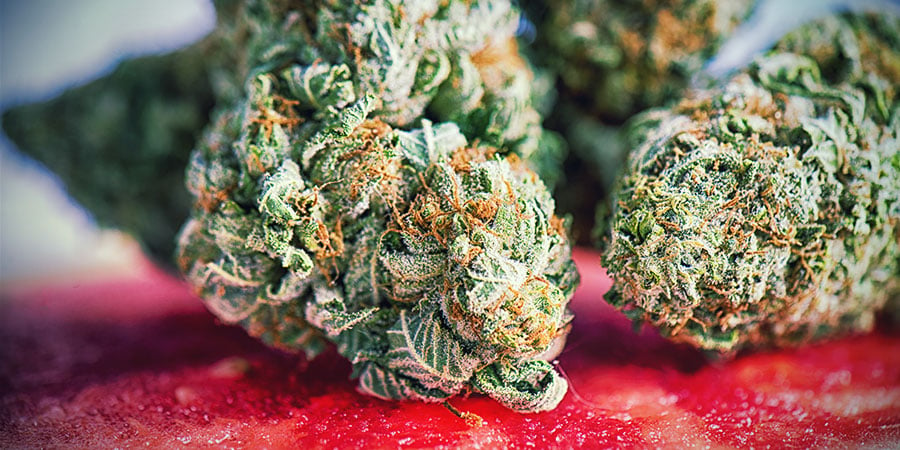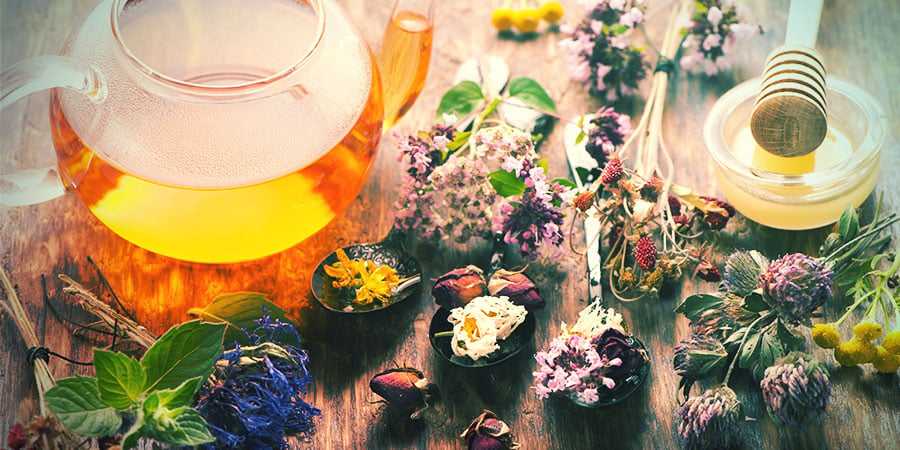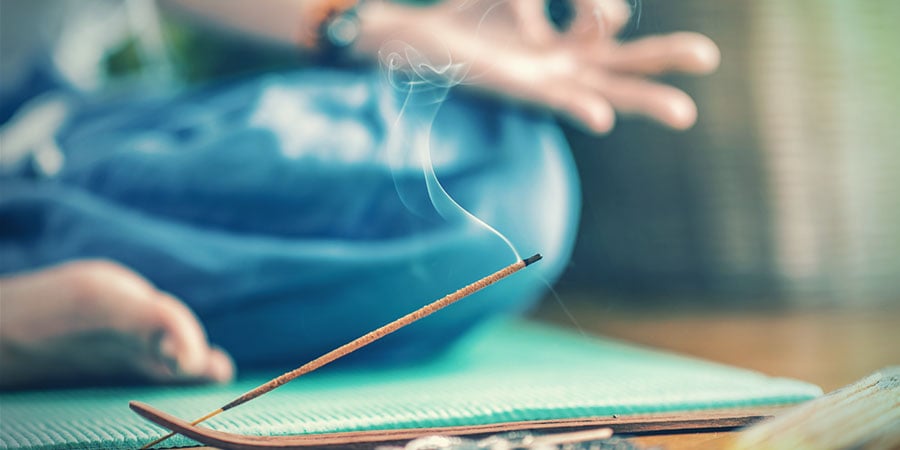
How Drugs Can Enhance The Meditation Experience
Psychedelics and meditation aren't so different long-term. Both of these experiences appear to effect the default mode network within the brain, a network responsible for thoughts of the self and rumination. Discover all there is to know about drugs, meditation, and combining the two.
MEDITATION: WHAT, WHY, AND HOW?
At its core, meditation is simply a practice that cultivates awareness. This form of mental training requires directing the mind towards a point of focus. During meditation, the mind has a tendency to stray into bizarre and repetitive loops of thought, a concept known as rumination. However, the act of meditation isn’t to necessarily sit in pure tranquility; it is to catch the mind when it does ruminate, be aware of the diversion, and return it back to the present.
This act can be compared, in some ways, to strength training. Each time you lift a weight, your body adapts by increasing the size of muscle fibres, making it more capable of dealing with such a stimulus. Every time you catch your mind running astray, the act of directing your focus back to the present can change the structure of your brain over time.
Research performed at Harvard University unveiled key elements of how a meditation practice can physically impact our brains, and how this pays off psychologically. During the study, magnetic resonance (MR) images were taken of the brain structure of participants before and after engaging in an eight-week programme that included a meditation practice. These images demonstrated increased gray-matter density in the hippocampus, an area of the brain associated with learning and memory. Increased density also occurred in areas associated with self-awareness, compassion, and introspection. On the flip side, decreased gray-matter density occurred in the amygdala, a region key in anxiety, stress, and the fight or flight response.
Additionally, further research 1 suggests meditation may lead to improvements in depression, anxiety, and pain. As well as cultivating a sense of inner peace and patience, meditation may be of assistance to those suffering with such pathologies, making it a non-invasive and simple practice worth exploring.
PSYCHEDELICS AND MEDITATION

Psychedelics and meditation appear as though they occupy opposite ends of a spectrum. Psychedelics have the potential to plunge users into a vivid and sometimes chaotic visionary experience that may very well pull the mind from the present and into a hallucinogenic voyage. In contrast, the aim of meditation is to relinquish excessive sensory stimuli and focus the mind upon a simple anchor point, such as the breath.
Although both of these experiences sound polarising, the two categories may greatly benefit each other, and may even produce similar results.
Psychedelics have a rich history within cultures around the world, and seemed to play an integral part in almost every native society. Scholars such as Terence McKenna even advocate for the idea that they played a fundamental role in the evolution of the human brain. Theory aside, some of these substances seem to target the same brain regions, and even mental pathologies, as meditation.
A study 2 published in The Lancet Psychiatry involved 12 patients suffering from moderate-to-severe depression who were given capsules of the psychoactive psilocybin mushroom. During a one-week post-treatment follow up, it was found that 8 out of the 12 patients had achieved temporary remission. Within three months, 7 patients continued to show improved symptoms.
These effects may be attributed to how psilocybin affects what is known in neuroscience as the default mode network (DMN). This network is comprised of regions located in the middle of the brain, and is active when a person is thinking about themselves, or ruminating. It turns out psilocybin is effective at down-regulating this area of the brain, which may be very helpful for people who have constant thoughts of negativity directed towards themselves. Dr. David Nutt, who proposed this theory, has stated 3 that psilocybin may also work for depression by rapidly replacing missing serotonin via working on the same receptors as this mood-regulating neurotransmitter.
Reducing default mode network activity is also a feature of meditation. A paper 4 published in the journal Cognitive, Affective, & Behavioral Neuroscience states that meditation is associated with reduced self-related thinking and mind wandering.
As well as having similar effects on brain chemistry, psychedelics and meditation may also go hand-in-hand in terms of the direct experience of each modality. For example, “set and setting” are the two proposed key parametres when it comes to preparing for an optimal psychedelic trip. “Setting” refers to the immediate environment, whereas “set” refers to the mindset of the individual.
A person who has meditated for some time may be more inclined to experience a “good trip” due to increased hippocampal gray matter. Likewise, less amygdala gray matter may reduce the possible fear response and panic associated with a “bad” trip. Although there is no solid science behind this theory, developing a solid meditation practice could calm the waters of your trip, whether that be a journey with ayahuasca, mushrooms, salvia, mescaline, or acid.
CANNABIS AND MEDITATION

Cannabis and meditation truly support each other. Most cannabis users will be able to attest to the herb’s ability to place the mind into the present moment, often resulting in laser-like focus and creative thoughts and flow states.
Meditation isn’t exactly an easy feat, and can be particularly difficult after a long and stressful day. Cannabis can serve as an excellent tool in these circumstances, helping the mind engage with the present moment whilst melting away factors such as stress and rumination that would usually distract from the meditation experience.
The two primary cannabis subspecies, indica and sativa, are known for their polar effects. Indicas are renowned for a heavy stoning effect that mainly affects the body, whilst sativas are appreciated for their stimulating effect on the mind. Both of these subspecies can be useful tools for meditation, serving as either a ground anchor for the body or mental motivation for the mind.
Below are three cannabis strains that are ideal to smoke up before a meditation session.
BEST CANNABIS STRAINS FOR MEDITATION

1. NORTHERN LIGHT BLUE AUTO
Northern Light Blue Auto is an indica-dominant hybrid strain that is ideal for meditation. A few tokes of this lady will assist the mind in breaking through repetitive thought patterns and arriving at the present moment. The indica-heavy genetics make for a high that predominantly targets the body, resulting in a heavy sensation that is both comforting and relaxing. The high comes on fast and lingers for quite some time. A THC value of 18% makes the effects very apparent, but it’s not to the point of being overwhelming and mentally distracting. Each hit of Northern Light Blue Auto is infused with terpenes that decorate the smoke with sweet hints of blueberries, raspberries, and strawberries.
Northern Light Blue Auto offers a nice personal stash of up to 500g/m² after only 55–65 days of growth. She maintains an easily manageable height of 80cm throughout the grow cycle—perfect for clandestine operations.
2. BLUE DREAM
Blue Dream offers something slightly different to Northern Light Blue Auto, yet the high is at a similar intensity level with a THC content of 18%. She is a sativa-dominant specimen developed in California and derived from parent strains Blueberry and Haze. The high kicks in fast with a stimulating and cognitive effect. This experience is one of laser-like focus and attention to detail, key qualities that help to enhance the experience of meditation. She minimises the chance of becoming distracted and makes sitting for long periods an easy and enjoyable task. What’s more, this pleasant high is served up with flavours of lemon and earth.
Blue Dream churns out tall and narrow flowers featuring a heavy dusting of resin-producing trichomes. She offers growers large and rewarding yields after a flowering time of between 65–70 days.
3. LAUGHING BUDDHA
Laughing Buddha has a name that deeply reflects the nature of her high. This heavily sativa-dominant lady produces only good vibes and goes straight to the head. The warm, positive, and energetic effects make every second of meditation an enjoyable one, giving the body a sense of lightness and ease. Her flowers are rich in aromatic terpenes and offer tastes and smells of sweet fruits. Minor levels of CBD provide a bit of clarity and relaxation to the high. This award-winning variety was born out of a breeding project involving Thai and Jamaican parent strains.
Laughing Buddha is capable of putting out impressive yields of 600g/m² indoors, where she grows to varying heights of 50–100cm. Be prepared to harvest these stinky buds after a flowering period of 70–75 days.
HERBS TO HELP YOU MEDITATE

It’s true that cannabis is an incredibly unique herb, but it’s not the only one that can help you meditate. These three herbs, best served up as a fresh cup of tea, can be used to relax the mind before your practice.
PASSIONFLOWER
Passionflower is a plant of magnificent beauty. She produces flowers with gorgeous white, purple, and red petals along with a stigma, ovary, and anther, which join together to form what looks like an alien structure. This climbing vine is native to the Southeast United States along with Central and South America.
Passionflower is known to produce mild sedative effects that may soothe the mind. Passionflower achieves these effects 5 due to chemical constituents that bind to GABA neurons within the brain, affecting GABA reuptake. This soothing effect makes the herb an ideal ally when it comes to meditation.
SAGE
Sage is an herb with extensive use in spiritual practice. Known by its scientific name Salvia Officinalis, sage is a perennial evergreen subshrub and member of the mint family that is native to the Mediterranean region. The herb is widely used in culinary settings along with herbs such as rosemary and thyme to add serious flavour to dishes.
Sage is rife with a variety of natural chemicals including phenolic acids, flavonoids, terpenoids, and polysaccharides. Several chemicals belonging to these umbrella groups may increase brain health and function, making sage another great herb to include around a meditation practice.
A review 7 published in the journal Drugs in R&D discusses how some of these constituents may have cognitive-enhancing and protective effects, partly by increasing chemicals known as neutrophils, which regulate brain function.
CHAMOMILE
Most people know of the warmth and comfort derived from a refreshing cup of chamomile tea. Chamomile is a daisy-like species that holds a whole host of benefits for meditation and life in general. The calm and relaxation experienced by consuming the chemicals within this herb may be due to its apparent anti-anxiety effects. It’s not entirely known how the herb achieves these effects, but it’s reported 8 that the flavonoids within may affect GABA, noradrenaline, dopamine, and serotonin neurotransmission.
All of these herbs are worth exploring. However, it’s important to be aware of possible drug interactions and side effects. Always do your own research before consuming them. With any further questions, consult your physician.
USING INCENSE FOR MEDITATION
One finishing touch that enhances relaxation in any meditation session is incense. Incense is the burning of a plant substance that releases pleasant scents into the air. As well as smelling fantastic, incense provides an undeniably calming vibe that grounds the body into the present. The practice may be classified as “hippie activities” to some, but there is some interesting science to back up its use, at least when it comes to frankincense.
Frankincense is the resin from the Boswellia plant. The smoke released from this resin when burned results in changes in brain activity when inhaled. In fact, this form of incense has been reported 9 to be psychoactive. Frankincense activates ion channels in the brain, and in doing so, can help alleviate anxiety and depression.
Of course, inhaling too much smoke in the long-run isn’t a great idea. You can also try using essential oils or e-juices to replicate these calming effects.
One popular and calming form of incense is known as nag champa. This type is based on sandalwood and provides a great atmosphere during meditation.
MEDITATION: WITH OR WITHOUT SUBSTANCES
Meditation is what you make of it; and although you do not need to include substances alongside your practice, the aforementioned herbs and natural ingredients can help enhance the meditation experience in myriad ways. It’s up to you to discover which one suits you best!
- (n.d.). Meditation for Anxiety and Depression? - 01/06/2014 - https://www.hopkinsmedicine.org
- (n.d.). Magic mushrooms trial for depression delayed by red tape | Imperial News | Imperial College London - https://www.imperial.ac.uk
- (n.d.). - https://onlinelibrary.wiley.com
- (n.d.). Burning incense is psychoactive: New class of antidepressants might be right under our noses - https://www.sciencedaily.com
- Adrian L. Lopresti. (2017, March). Salvia (Sage): A Review of its Potential Cognitive-Enhancing and Protective Effects - https://www.ncbi.nlm.nih.gov
- Appel K, Rose T, Fiebich B, Kammler T, Hoffmann C, & Weiss G. (2011 Jun). Modulation of the γ-aminobutyric acid (GABA) system by Passiflora incarnata L - https://www.ncbi.nlm.nih.gov
- Garrison, Kathleen A., Zeffiro, Thomas A., Scheinost, Dustin, Constable, R. Todd, Brewer, & Judson A. (2015, September). Meditation leads to reduced default mode network activity beyond an active task - https://link.springer.com
- Jay D. Amsterdam, Yimei Li, Irene Soeller, Kenneth Rockwell, Jun James Mao, & Justine Shults. (2009, August). A RANDOMIZED, DOUBLE-BLIND, PLACEBO-CONTROLLED TRIAL OF ORAL MATRICARIA RECUTITA (CHAMOMILE) EXTRACT THERAPY OF GENERALIZED ANXIETY DISORDER - https://www.ncbi.nlm.nih.gov
- Robin L Carhart-Harris, Mark Bolstridge, James Rucker, Camilla M J Day, David Erritzoe, Mendel Kaelen, Michael Bloomfield, James A Rickard, Ben Forbes, Amanda Feilding, David Taylor, Steve Pilling, Valerie H Curran, & David J Nutt. (2016/07/01). Psilocybin with psychological support for treatment-resistant depression: an open-label feasibility study - https://www.thelancet.com
-
 5 min
October 3, 2019
The Psychedelic Trip Sitter's Guide
Whether you are new to psychedelics or an experienced hand, the benefits of a trip sitter are significant. While they will not guide your trip, they are there to make sure you can explore the...
5 min
October 3, 2019
The Psychedelic Trip Sitter's Guide
Whether you are new to psychedelics or an experienced hand, the benefits of a trip sitter are significant. While they will not guide your trip, they are there to make sure you can explore the...
-
 4 min
June 26, 2019
7 Reasons To Use Incense
Using incense needn’t be exclusive to religious worship or moments of self-reflection. They can be used at home, in the office, or to cover up unwanted smells. There has never been a better time to...
4 min
June 26, 2019
7 Reasons To Use Incense
Using incense needn’t be exclusive to religious worship or moments of self-reflection. They can be used at home, in the office, or to cover up unwanted smells. There has never been a better time to...
-
 4 min
February 5, 2019
9 (Legal) Drugs That Will Induce a Psychedelic Trip
While most psychedelic substances are considered illegal in many countries, there are a few that buck the trend. From plants of the rain forest used for powerful psychedelic brews, to the mystical...
4 min
February 5, 2019
9 (Legal) Drugs That Will Induce a Psychedelic Trip
While most psychedelic substances are considered illegal in many countries, there are a few that buck the trend. From plants of the rain forest used for powerful psychedelic brews, to the mystical...
-
 3 min
October 15, 2018
What Cannabis Does To Your Brain
Cannabis has a complex relationship with our bodies, and interacts with us in many ways. Here is exactly what it does to the brain.
3 min
October 15, 2018
What Cannabis Does To Your Brain
Cannabis has a complex relationship with our bodies, and interacts with us in many ways. Here is exactly what it does to the brain.
-
 3 min
April 8, 2016
Does Cannabis Make You More Creative?
Bob Marley, Jay-Z and Lady Gaga have all attributed cannabis to aiding their creativity. So for the average Joe is there a chance at claiming some of this success through smoking cannabis?
3 min
April 8, 2016
Does Cannabis Make You More Creative?
Bob Marley, Jay-Z and Lady Gaga have all attributed cannabis to aiding their creativity. So for the average Joe is there a chance at claiming some of this success through smoking cannabis?
-
 1 min
January 8, 2016
The Origins of Nag Champa Incense
Nag Champa is a unique blend of herbs used to create that iconic incense smell. Its use is so widespread that its smell became intimately linked to incense - though it is used in many other products.
1 min
January 8, 2016
The Origins of Nag Champa Incense
Nag Champa is a unique blend of herbs used to create that iconic incense smell. Its use is so widespread that its smell became intimately linked to incense - though it is used in many other products.











 United States
United States









